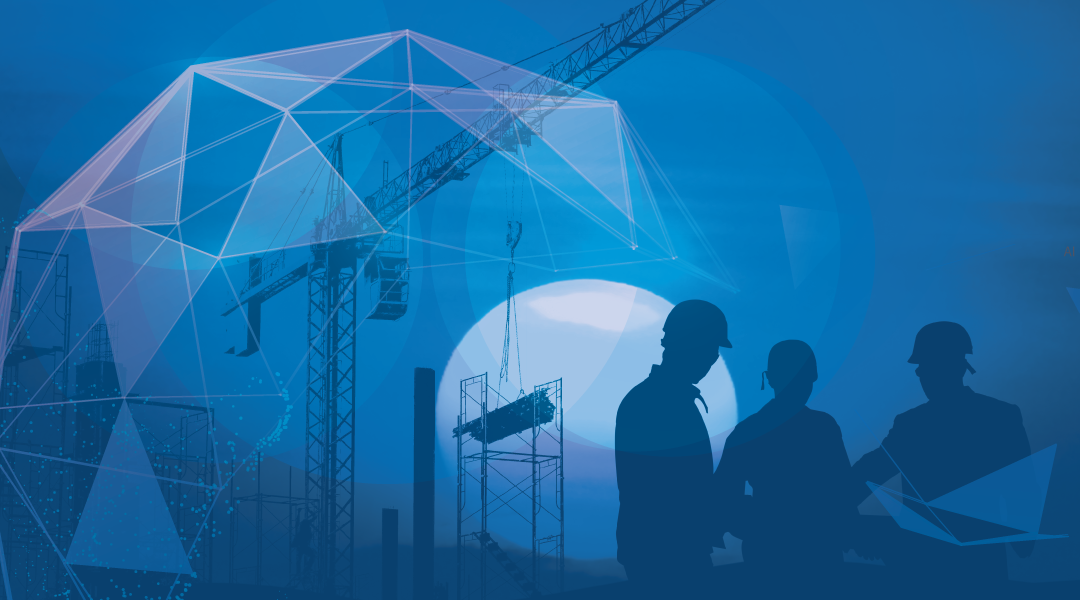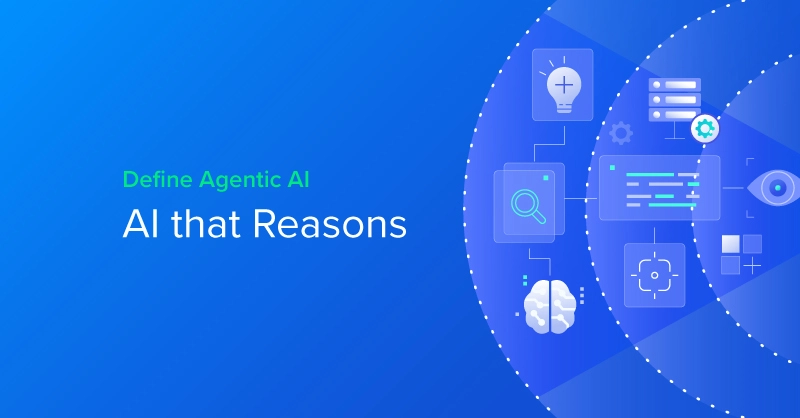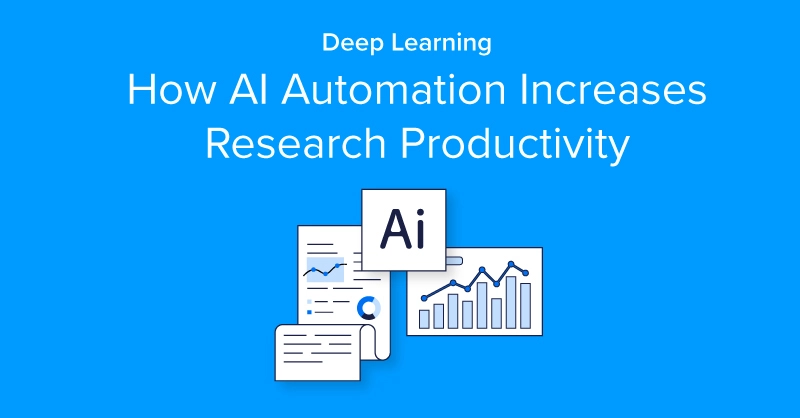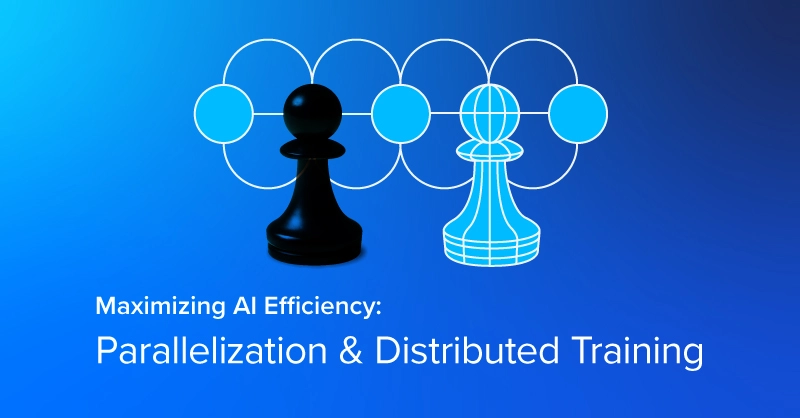
Using AI In Construction to Build a Better Future
Using artificial intelligence (AI) in the construction industry typically involves machine learning networks crunching data, data collection computer vision sensors, and the occasional physical robotics doing simple and repeatable manual tasks, such as laying bricks.
While it seems construction involving AI is still in its infancy stage, there are still things to consider about the proper places where AI can find its place in the construction industry. Ultimately, AI is being used to make construction processes and projects more efficient and safe for human workers.
There is some concern that AI will be removing human jobs, but so far that’s not a concern that we've seen materialize. Like other industries involving artificial intelligence, AI is following the path of augmenting human tasks in order to speed up projects and make them safer. The good news is AI seems to be allowing for many new and innovative ways to build a better future instead of hurting human progress.
Interested in a deep learning solution?
Learn more about Exxact workstations starting at $3700
How Does AI Help Construction?
How is AI being used in the construction industry? Currently, two of the most common uses for AI in construction revolve around scheduling labor for projects and risk assessment. These areas are major headaches in the construction industry, and could definitely benefit from new innovative solutions, especially risk assessment.
When AI is used to create opportunity and improvements in the construction industry, it demonstrates its efficiency and effectiveness. From maximizing the available labor force to using sensors and data to minimize and mitigate risk, AI is proving its worth in construction.
AI Scheduling for Employees
One of the construction industry’s most fundamental problems is managing labor shortage. Fewer individuals are choosing careers in the construction industry, resulting in a shrinking workforce and creating a construction worker shortage.
How can AI in construction help with labor shortage? By streamlining talent retention.
Machine learning algorithms can use available data on the current and potential workforce for a project and identify which employees may be working temporarily, predict an upcoming low point in available workforce, identify specific individuals best suited for a job based on their skill and experience, and even identify who may be potential leadership/management material. This allows project managers to better evaluate putting the right people in the right positions in order to maximize their workforce.
Using AI in construction for scheduling and assessing talent retention can lead to lasting reforms in the construction industry as a whole. The more workers feel that their skills are being noticed and used appropriately, the more likely they are to stay in the industry for longer periods of time. And this reduces overhead costs for companies using AI, and the employees/workers are more satisfied knowing they have something stable with an opportunity for upward mobility.
In 2017, it was estimated that using AI in for assessing labor shortages and focusing on talent retention could boost productivity by as much as 50%! These numbers cannot be ignored and can pave the way for a better, more efficient future for construction.
Risk Assessment With AI
Construction has many risks associated with the industry. Some risks have more devastating effects than others. By taking advantage of AI, companies can mitigate risks and, in some cases, remove risk entirely by identifying dangerous situations before they cause problems.
There are AI solutions that can monitor and prioritize risks on site as well as analyze plans and designs before construction begins. AI algorithms exist with the ability to scan and generate construction plans and designs in order to help assess where design plans may not work and also suggest how to adjust them in a way that minimizes risk in a variety of scenarios. Other AI solutions can consistently take in data through sensors and offer risk predictions at various levels based on the progress of construction.
Humans are unpredictable and hard to assess, so having AI manage known risks before, during, and after construction frees up human resources to monitor human variables and the risks they pose to a project and to each other.
Construction is a place with plenty of work hazards. Many of these, unfortunately, are caused by human error. Imagine if you could reduce human error by having more eyes looking out for ways to prevent these from happening. After all, although human eyes can't keep watch 24/7, computer sensors can, and AI never gets tired.
Increasing safety on work sites is one of the most critical ways AI can be used in construction to benefit the industry as a whole.
Increasing Safety With Artificial Intelligence (AI)
Thanks to AI, there’s heavy equipment that can sense danger to a human and shut down when necessary to prevent injuries. And in some cases, if an injury still occurs, it can alert management and even notify emergency personnel of an incident. The quicker reaction time and more eyes (sensors) assessing work conditions can all help make a safer work environment.
These days, construction equipment is being enhanced with systems that can shut down when there is danger of a malfunction. Using AI algorithms with data collection ultimately allows for predictions and alerts when problems, delays, or malfunctions might occur. This can allow workers to move away from the area, switch tasks as needed, and even help lower maintenance costs by signaling problems before they arise – ultimately reducing delays and downtime, as well as expensive cleanup and wrongful death or injury lawsuits.
AI-enabled surveillance systems can also keep an eye on construction sites 24/7, using facial and object recognition technology to make sure personnel and equipment are all monitored for safety. Some AI-enabled surveillance systems are even capable of detecting unsafe behavior and alerting the construction team of potential hazards. Although this reduces liability and increases efficiency, more importantly it also saves lives.
5 Ways to Implement AI In Construction
If AI is as beneficial as we have stated here, then the next phase becomes a question of how to begin using AI in your construction projects. Jumping into anything that seems extremely technical can easily cause people to just stick with what they are already using, but don't let the fear of adopting something new deter you.
We've listed out five steps to help anyone get started with adding an AI element to a construction company, or to help construction professionals walk through the process of incorporating AI into their industry.
1. Accept That Change Is Needed
This first step is a mindset shift that has to take place across an entire organization and at the individual level. There has to be an acceptance that change is needed and that AI is that change.
If a company is expected to use AI, there has to be a smooth mindset shift that takes place. Effective communication is necessary because people tend to see AI as a threat to their employment instead of an asset to help them get the job done effectively and safely.
This is an important step because if companies cannot get on board with the necessary changes AI will bring, then the use of AI may harm instead of help. People are resistant to change and need help navigating these tricky transitions.
Remember: AI is meant to augment a person's ability to do a better job, not act as a replacement to that person.
2. Identify Problems AI Can Solve
Now is the time to start thinking about direct applications for AI. There needs to be clearly defined, and preferably repeatable, problems that AI can solve. Some suggested criteria for problems are:
- What problems can be solved by adding AI?
- Ease of implementation (how hard will it be to start using AI?)
- ROI (how long before we see gains by using AI?)
- And primary vs secondary (how does it rank in importance in daily business?)
- Will adding AI require you to add people to manage it?
As you rank problems using this criteria, you will begin to see how AI can start to solve those problems.
3. Start Small With AI
This is the step where you get everything started.
Start small with the implementation of AI data collection and technology solutions. Identify one problem and one AI solution and get to work implementing it as smoothly as possible with the right experts and the right AI technology. Collect data before, during, and after an assessment period with and without the AI.
Once one AI solution is in place, and everything is running smoothly, then another AI solution can be implemented. Doing a complete overhaul is not recommended because there’s always minor fixes and tweaks that have to take place, and moving into something unfamiliar can initially slow down resources as you move through the adoption phase.
4. Create a Dedicated AI Department or an AI Team
If construction companies want to get started in AI, they’ll most likely need a dedicated AI department.
An IT department usually can start the process of working with small AI applications, but as implementation grows, then it may outgrow what an internal IT company can do. At this stage a company can either decide to increase their IT department with new hires or contract an AI department or company that specializes in artificial intelligence applications for construction.
Having an AI department allows for accelerated implementation of more appropriate AI solutions, too. Being an efficient and early adopter of AI in construction will give any company a competitive edge against other construction companies.
5. Expand AI
The obvious final step is to continue to expand AI integrations. Some companies may have started with AI-enabled surveillance for safety and security, but now are positioned to efficiently implement AI solutions in multiple areas.
The next stage for a company is to move forward in confidence knowing AI can do even more in terms of applications than we realized before. So, continue to fine-tune and grow, using AI to strengthen your company and keep it's workers safe.
Looking For More Information On AI?
The world of AI is constantly expanding with new developments and technologies popping up all the time. It is no longer a question of why we should use AI in construction, but how we can use it efficiently.Have any questions?
Contact Exxact Today

How AI is Changing the Construction Industry
Using AI In Construction to Build a Better Future
Using artificial intelligence (AI) in the construction industry typically involves machine learning networks crunching data, data collection computer vision sensors, and the occasional physical robotics doing simple and repeatable manual tasks, such as laying bricks.
While it seems construction involving AI is still in its infancy stage, there are still things to consider about the proper places where AI can find its place in the construction industry. Ultimately, AI is being used to make construction processes and projects more efficient and safe for human workers.
There is some concern that AI will be removing human jobs, but so far that’s not a concern that we've seen materialize. Like other industries involving artificial intelligence, AI is following the path of augmenting human tasks in order to speed up projects and make them safer. The good news is AI seems to be allowing for many new and innovative ways to build a better future instead of hurting human progress.
Interested in a deep learning solution?
Learn more about Exxact workstations starting at $3700
How Does AI Help Construction?
How is AI being used in the construction industry? Currently, two of the most common uses for AI in construction revolve around scheduling labor for projects and risk assessment. These areas are major headaches in the construction industry, and could definitely benefit from new innovative solutions, especially risk assessment.
When AI is used to create opportunity and improvements in the construction industry, it demonstrates its efficiency and effectiveness. From maximizing the available labor force to using sensors and data to minimize and mitigate risk, AI is proving its worth in construction.
AI Scheduling for Employees
One of the construction industry’s most fundamental problems is managing labor shortage. Fewer individuals are choosing careers in the construction industry, resulting in a shrinking workforce and creating a construction worker shortage.
How can AI in construction help with labor shortage? By streamlining talent retention.
Machine learning algorithms can use available data on the current and potential workforce for a project and identify which employees may be working temporarily, predict an upcoming low point in available workforce, identify specific individuals best suited for a job based on their skill and experience, and even identify who may be potential leadership/management material. This allows project managers to better evaluate putting the right people in the right positions in order to maximize their workforce.
Using AI in construction for scheduling and assessing talent retention can lead to lasting reforms in the construction industry as a whole. The more workers feel that their skills are being noticed and used appropriately, the more likely they are to stay in the industry for longer periods of time. And this reduces overhead costs for companies using AI, and the employees/workers are more satisfied knowing they have something stable with an opportunity for upward mobility.
In 2017, it was estimated that using AI in for assessing labor shortages and focusing on talent retention could boost productivity by as much as 50%! These numbers cannot be ignored and can pave the way for a better, more efficient future for construction.
Risk Assessment With AI
Construction has many risks associated with the industry. Some risks have more devastating effects than others. By taking advantage of AI, companies can mitigate risks and, in some cases, remove risk entirely by identifying dangerous situations before they cause problems.
There are AI solutions that can monitor and prioritize risks on site as well as analyze plans and designs before construction begins. AI algorithms exist with the ability to scan and generate construction plans and designs in order to help assess where design plans may not work and also suggest how to adjust them in a way that minimizes risk in a variety of scenarios. Other AI solutions can consistently take in data through sensors and offer risk predictions at various levels based on the progress of construction.
Humans are unpredictable and hard to assess, so having AI manage known risks before, during, and after construction frees up human resources to monitor human variables and the risks they pose to a project and to each other.
Construction is a place with plenty of work hazards. Many of these, unfortunately, are caused by human error. Imagine if you could reduce human error by having more eyes looking out for ways to prevent these from happening. After all, although human eyes can't keep watch 24/7, computer sensors can, and AI never gets tired.
Increasing safety on work sites is one of the most critical ways AI can be used in construction to benefit the industry as a whole.
Increasing Safety With Artificial Intelligence (AI)
Thanks to AI, there’s heavy equipment that can sense danger to a human and shut down when necessary to prevent injuries. And in some cases, if an injury still occurs, it can alert management and even notify emergency personnel of an incident. The quicker reaction time and more eyes (sensors) assessing work conditions can all help make a safer work environment.
These days, construction equipment is being enhanced with systems that can shut down when there is danger of a malfunction. Using AI algorithms with data collection ultimately allows for predictions and alerts when problems, delays, or malfunctions might occur. This can allow workers to move away from the area, switch tasks as needed, and even help lower maintenance costs by signaling problems before they arise – ultimately reducing delays and downtime, as well as expensive cleanup and wrongful death or injury lawsuits.
AI-enabled surveillance systems can also keep an eye on construction sites 24/7, using facial and object recognition technology to make sure personnel and equipment are all monitored for safety. Some AI-enabled surveillance systems are even capable of detecting unsafe behavior and alerting the construction team of potential hazards. Although this reduces liability and increases efficiency, more importantly it also saves lives.
5 Ways to Implement AI In Construction
If AI is as beneficial as we have stated here, then the next phase becomes a question of how to begin using AI in your construction projects. Jumping into anything that seems extremely technical can easily cause people to just stick with what they are already using, but don't let the fear of adopting something new deter you.
We've listed out five steps to help anyone get started with adding an AI element to a construction company, or to help construction professionals walk through the process of incorporating AI into their industry.
1. Accept That Change Is Needed
This first step is a mindset shift that has to take place across an entire organization and at the individual level. There has to be an acceptance that change is needed and that AI is that change.
If a company is expected to use AI, there has to be a smooth mindset shift that takes place. Effective communication is necessary because people tend to see AI as a threat to their employment instead of an asset to help them get the job done effectively and safely.
This is an important step because if companies cannot get on board with the necessary changes AI will bring, then the use of AI may harm instead of help. People are resistant to change and need help navigating these tricky transitions.
Remember: AI is meant to augment a person's ability to do a better job, not act as a replacement to that person.
2. Identify Problems AI Can Solve
Now is the time to start thinking about direct applications for AI. There needs to be clearly defined, and preferably repeatable, problems that AI can solve. Some suggested criteria for problems are:
- What problems can be solved by adding AI?
- Ease of implementation (how hard will it be to start using AI?)
- ROI (how long before we see gains by using AI?)
- And primary vs secondary (how does it rank in importance in daily business?)
- Will adding AI require you to add people to manage it?
As you rank problems using this criteria, you will begin to see how AI can start to solve those problems.
3. Start Small With AI
This is the step where you get everything started.
Start small with the implementation of AI data collection and technology solutions. Identify one problem and one AI solution and get to work implementing it as smoothly as possible with the right experts and the right AI technology. Collect data before, during, and after an assessment period with and without the AI.
Once one AI solution is in place, and everything is running smoothly, then another AI solution can be implemented. Doing a complete overhaul is not recommended because there’s always minor fixes and tweaks that have to take place, and moving into something unfamiliar can initially slow down resources as you move through the adoption phase.
4. Create a Dedicated AI Department or an AI Team
If construction companies want to get started in AI, they’ll most likely need a dedicated AI department.
An IT department usually can start the process of working with small AI applications, but as implementation grows, then it may outgrow what an internal IT company can do. At this stage a company can either decide to increase their IT department with new hires or contract an AI department or company that specializes in artificial intelligence applications for construction.
Having an AI department allows for accelerated implementation of more appropriate AI solutions, too. Being an efficient and early adopter of AI in construction will give any company a competitive edge against other construction companies.
5. Expand AI
The obvious final step is to continue to expand AI integrations. Some companies may have started with AI-enabled surveillance for safety and security, but now are positioned to efficiently implement AI solutions in multiple areas.
The next stage for a company is to move forward in confidence knowing AI can do even more in terms of applications than we realized before. So, continue to fine-tune and grow, using AI to strengthen your company and keep it's workers safe.
Looking For More Information On AI?
The world of AI is constantly expanding with new developments and technologies popping up all the time. It is no longer a question of why we should use AI in construction, but how we can use it efficiently.Have any questions?
Contact Exxact Today




